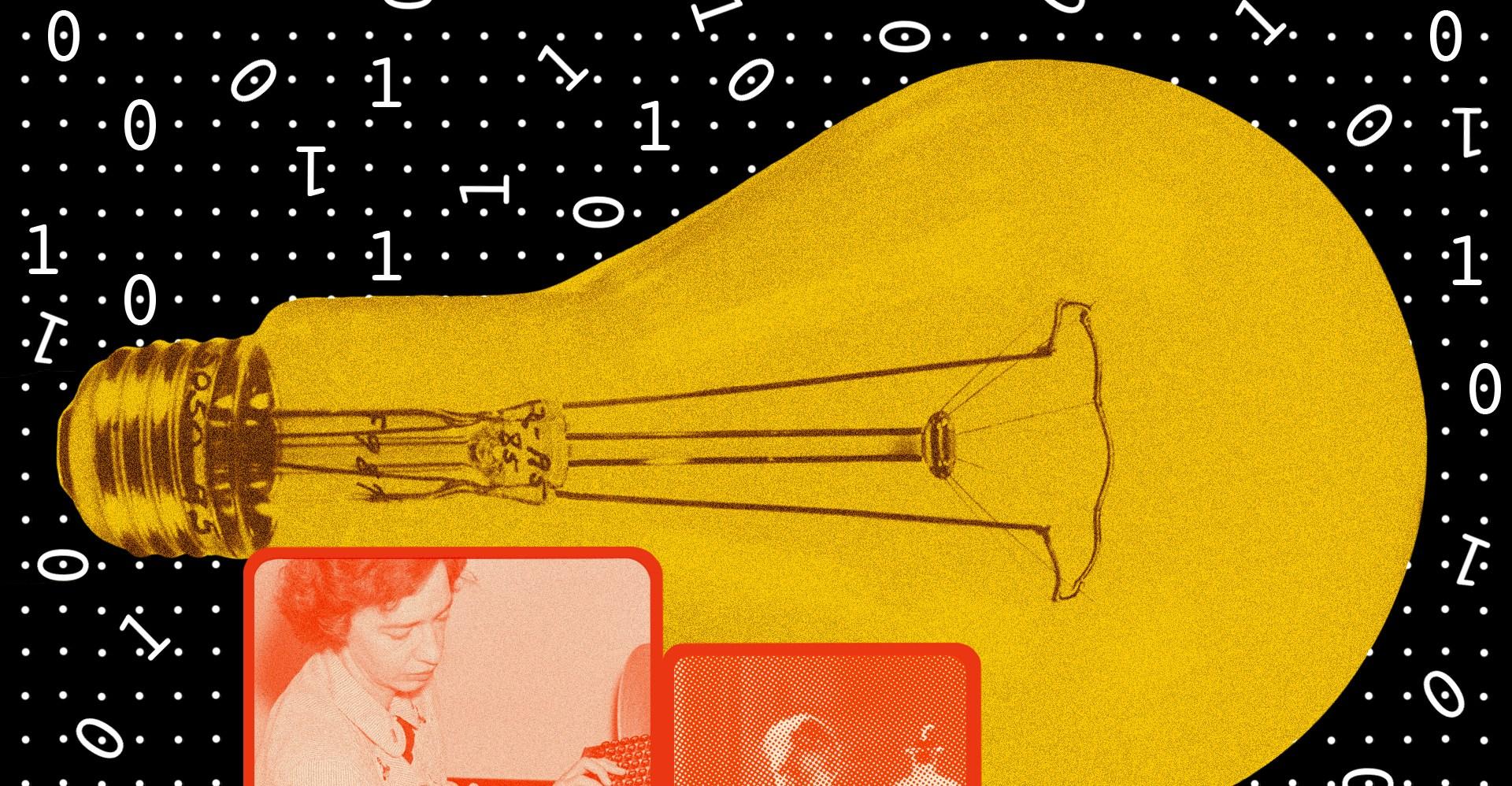It’s never good when an alarm surprises you in the middle of the night. I was recently on vacation with my family, and a weird beeping woke everyone up around 2 am. My wife thought it was a carbon monoxide detector. I thought it might be the baby monitor. It …

Published 6 months ago on Jun 2nd 2025, 4:00 pm
By Web Desk
It’s never good when an alarm surprises you in the middle of the night.
I was recently on vacation with my family, and a weird beeping woke everyone up around 2 am. My wife thought it was a carbon monoxide detector. I thought it might be the baby monitor. It was actually a signal from a little sensor on the back of my arm prompting an app on my phone to go berserk. My blood sugar was low, and my fitness program was in jeopardy.
A few months ago, I started tracking everything I could about my health. In the dark bedroom of that vacation house, I was wearing smart rings on both hands and a smartwatch on my wrist. On my other wrist was a band that basically does the same thing as the smartwatch but without a screen. I’d been weighing myself with a body scanner and taking my blood pressure with a wireless cuff for weeks.
All this tech promised to tell me how well my body was working, but as I immersed myself in the alluring, sometimes dystopian future of health tracking, things got weird. Health trackers started as a way to keep a record of straightforward metrics, like the number of steps you take in a day; the industry has since matured into gadgets that promise to glean deeper insights into the essential functioning of your biological systems. Many of these new trackers take the data they collect and churn out a variety of scores — recovery scores, sleep scores, attention scores — to understand your body’s performance and give you benchmarks to chase.
The sensor on my arm was a continuous glucose monitor, or CGM, which is a wearable device that measures blood sugar. This kind of biosensor has long been a lifesaving tool for diabetic patients, but tech companies are increasingly marketing them to everyone in the name of “metabolic health.” One such company, Levels, was co-founded by Casey Means, a wellness influencer who is a central figure in the Make America Healthy Again movement and now the United States surgeon general nominee.
I am not diabetic. I’m also not an athlete, although I once was. I’m a tech journalist who, at the beginning of this year, started to feel quite old. Things that used to not hurt started hurting, and I felt tired constantly. Diabetes and heart disease, among the most prevalent chronic diseases in the United States, also run in my family, which made it seem wise to keep a closer eye on risk factors like my blood pressure and cholesterol.
My sharpening sense of mortality ultimately led me to explore the frontiers of health tracking to investigate my aches and strains — and maybe help me live healthier and longer.
What I can tell you is that over the course of my months-long experiment, covering my body with sensors and drowning my attention with fitness scores did occasionally make me feel better — when it didn’t make me feel worse.
Fitness trackers, as we understand them, have been around since the 1960s, when a Japanese company hoped to capitalize on the 1964 Tokyo Olympics by selling a pedometer called the Manpo-Kei — “manpo” means 10,000 steps in Japanese. The science behind that number has always been iffy, but the figure went mainstream in 2009, when the original Fitbit hit the market in the form of a thumb-size accelerometer that clipped onto your clothing.
Step-counting was only the beginning. In the early 2010s, tech companies flooded the market with fitness trackers. Apple released its health app in 2014 and then released the first Apple Watch the following year. That device used LED lights to measure your pulse, and eventually, Apple added sensors for your body temperature and electrodes to record electrocardiograms and track blood oxygen levels. Fitness-tracking became health tracking. The tracking devices themselves still performed the same basic measurements, but in the coming years, all of that data would get pumped through various algorithms to draw conclusions about your overall health. In theory, health-tracking software could spot — or even prevent — disease.
“For that to work, you have to have the largest data set on a person possible,” said Victoria Song, who covers wearables for The Verge. “But it’s pretty invasive, if you really think about it.”
The amount of data all of these devices collect is massive and extremely personal. Many devices need to know your age, height, and weight, not to mention where you are and how you’re moving at all times — which leads to heart rate, temperature, and blood oxygen readings. If you add a glucose monitor in the mix, health trackers can now get moment-to-moment updates about what’s happening in the fluid between your cells.
Safeguarding the sensitive health information these devices collect is a whole other challenge. The data is typically stored in the cloud. The privacy policies for these companies vary, but suffice it to say, it’s possible that data from your health tracker, probably anonymized, ends up in the hands of an advertiser. There have also been major data breaches involving health-tracking companies, including Fitbit.
Nonetheless, about 30 percent of Americans in one survey said they wear these kinds of health trackers, and there’s evidence that the tech can be good for you. In 2022, The Lancet published a systematic review that looked at dozens of studies involving over 160,000 participants of all ages and found that those wearing fitness trackers walked 40 more minutes per day — or about 1,800 steps — on average. A review into the mental health benefits of wearables published in 2024 found some research showing that wearables have a positive effect on well-being, but overall determined that the issue was understudied.
People must think wearables are helpful because they keep buying them. Perhaps that’s no surprise given levels of chronic illness remain stubbornly high in the United States and a wellness industry has primed consumers to buy their way to better physical and mental health. The market for these devices includes everyone from fitness obsessives looking to optimize their performance in the gym to tech bros toying with the idea of living forever to anxious dads, like me. Health trackers give us the sense that we might just be able to exert control over the uncontrollable — our very mortality — or to at least momentarily allay our fears about it. And the industry keeps coming up with new things to sell us.
“We have so much information about everything all the time,” Thea Gallagher, a clinical psychologist at NYU Langone Health, told me recently. “So many of us, probably all of us, feel like this is going to be an iterative process for the rest of our life: navigating our relationship with the tech.”
The most popular wearable has been the Apple Watch since its release, but in our screen-saturated world, many people are turning to devices that lack displays and buzzing notifications. That includes the Oura ring, which discreetly measures your heart rate, body temperature, and movement from a single finger, and the Whoop band, which does the same thing from your wrist. Although their lack of screens makes these devices theoretically easier to ignore, the Oura and Whoop apps are essentially endless feeds of your health data.
When you log on in the morning, Oura produces a “Readiness Score,” which it says is a “holistic picture of your health” that combines several signals, including resting heart rate and body temperature, into what feels like a grade for the day. Whoop gives you a similarly confusing “Recovery” percentage. If I want to improve those scores, Oura, Whoop, and a growing number of their competitors now have AI-powered coaches built into their apps to nudge your behavior. But it’s not always clear what exactly those nudges hope to accomplish.
“There’s not a lot of time and effort spent on figuring out what is the actual question,” said Gary Wolf, founder of Quantified Self, a community of people who have been tracking their health metrics since the mid-2000s, and also a tech journalist. “It’s kind of obvious why people come through these tools without learning anything.”
In theory, your doctor could look at a readout of all your wearable data to get a clearer picture of your health. But in reality, few patients even share this data with their doctors, and many physicians have said it isn’t very helpful. Heart-rate variability, a measure of the change in time between your heartbeats, is one of the most critical metrics used in the scoring algorithms, but there’s some debate over how accurately wearables can measure it. There’s also just too much data, and it’s hard to isolate the signal from the noise.
“Just seeing the data can be anxiety-inducing,” said Tanzeem Choudhury, a professor of integrated health and technology at Cornell Tech. “You have all this information that you don’t know what to do with.”
In other words, if you think of your overall health as an equation (which, to be clear, it is not), the types of variables a watch or a ring can collect are limited to the right side of the equal sign. You’re doing your thing, and then things like breathing patterns, heart rate, and body temperature are all the end result. What happens on the left side of that equation — what’s causing all of these fluctuations — is much harder to figure out.
Health trackers ultimately put the onus on the user to decide what changes to make to get their desired results. And when it comes to smartwatches, smart rings, and smart bands, the recommendations tend to be pretty simple: Move more or sleep more. These devices know the rhythms of your body, but they can’t really know what’s happening internally.
The first time I installed a continuous glucose monitor into my arm, I expected it to hurt. The coin-size biosensors use a spring-loaded plunger of sorts that dips a needle into your skin and leaves a tiny piece of filament behind that measures your blood glucose. The process is surprisingly painless.
Once installed, the biosensor syncs to an app that shows you a real-time visualization of your blood sugar. It looks a little bit like a roller-coaster with spikes for high-glucose periods after eating and stable stretches. This helps people with diabetes manage their condition, but a growing number of companies and influencers say these biosensors can help anyone gain insight into their metabolic health.
What I didn’t know when I started receiving real-time and sometimes alarming updates about my own blood sugar was that metabolic health is the latest buzz phrase not only in the health-tracking industry but among adherents of the Make America Healthy Again movement.
While the concept of metabolic disorders, which include conditions like diabetes or heart disease, has evolved over the past century, “metabolic health” only started showing up in medical literature in the last decade or so. Someone is considered metabolically healthy if a certain set of their biomarkers — namely blood glucose levels, cholesterol, triglycerides, and blood pressure — are within the desired range.
Historically, your doctor checked these levels when you got your annual bloodwork done and that was enough to give most people peace of mind about their health — particularly their risk for heart disease and diabetes. But in recent years, pharmaceutical companies like Abbott and Dexcom have begun to market over-the-counter continuous glucose monitors to everyone. Oura recently launched a glucose-tracking program of its own that uses Dexcom’s Stelo biosensors. Abbott has its own app.
Then there’s Levels, the metabolic health company co-founded by Means, President Donald Trump’s pick for US surgeon general, with the mission to “bring biowearables into the mainstream.” Means, a Stanford-trained physician and wellness influencer, is also the co-author of Good Energy, a bestselling book that bills itself as “the simple answer to achieving incredible health,” which she wrote with her brother, Calley Means, a former lobbyist and current White House adviser on health policy. The book operates on the claim that every chronic disease stems from metabolic dysfunction, or “bad energy,” and the American health care system, which Calley Means calls a “sick-care system,” is profiting from treating the symptoms.
“You are the primary person in charge of understanding your body,” Casey Means says on her website. “You may have been indoctrinated to think you’re not capable of understanding your body or your lab tests, but this stops here.” That philosophy — and the philosophy undergirding health tracking in general — fits into MAHA’s ethos — that good health is your personal responsibility and can be engineered by doing all the right things.
Other prominent figures in the MAHA movement have been raising the alarm about metabolic health, too, and touting high-tech health tracking as a solution. Robert Lustig, professor emeritus of pediatric endocrinology at UCSF who is an adviser and early investor in Levels, signed an open letter endorsing Robert F. Kennedy Jr. to lead Health and Human Services. So did Mark Hyman, the co-founder of the membership-based concierge lab test provider Function Health who’s pushed Levels to his followers.
Perhaps the most influential of the health-tracking evangelists, however, is Marty Makary, the new commissioner of the Food and Drug Administration. In his Senate confirmation hearing in March, Makary, a pancreatic surgeon from Johns Hopkins, talked quite a bit about the promise of health trackers in the midst of America’s chronic disease epidemic. Makary said we have a “generational opportunity to usher in radical transparency” and to “help people take care of their own health.”
“We don’t just want to limit continuous glucose monitoring to people with diabetes. We want to prevent diabetes,” Makary told senators. “Why are we holding these tools to help people empower them with knowledge about their health until after they’re sick?”
Regardless of the recent buzz around metabolic health in the wellness community, the medical community does not seem convinced that glucose monitors are useful for people without diabetes. Because there’s not much research into tracking blood sugar in healthy people, “we won’t know whether the cost and time it takes to implant one of these systems is accomplishing anything or is just the latest health monitoring fad wasting effort and money,” according to Harvard Medical School associate professor Robert Shmerling.
I tested several glucose-monitoring apps — including Levels, Lingo, Oura — over the course of a few months, and the negative effects of watching my blood sugar levels were almost immediately obvious to me. Within a week of wearing a glucose monitor, I started to notice some borderline disordered behavior. The Levels app sent me push alerts when my blood sugar spiked, which happened about five times a day, and each notification felt like a zap of anxiety. My morning bowl of cereal sent my blood glucose off the charts. My tuna sandwich at lunch did it again. A beer at happy hour? Forget it, the app made me think I was dying.
So I started eating weird. I’d shovel nuts into my mouth before breakfast, skip lunch to avoid stressful push alerts, and once I ate a mixing bowl full of romaine lettuce to feel better about a single slice of pizza. My wife drew the line when I started taking pictures of my meals, so that some app’s AI could analyze the nutrients in them.
Glucose spikes after a meal are extremely normal. This is your body converting food into energy, or sugar, and then releasing insulin to instruct your cells to consume that energy. Over time, a pattern of large, prolonged spikes can lower your insulin resistance and raise your risk for Type 2 diabetes and heart disease. Some research indicates that continuous glucose monitors could be a helpful tool for the early detection of prediabetes in high risk patients, but again, there is little evidence that healthy people benefit from using the technology.
At a certain point, I wasn’t thinking about my long-term health or sanity. I definitely wasn’t thinking about the future of the American health care system. I was just trying to get a good score in the app and reduce the number of anxiety zaps.
I spend a lot of time thinking about how technology makes our lives better — and worse. I’ve wondered the same about the American health care system, as I’ve gotten older and more involved in the health care decisions of my parents, kids, and myself. It’s not a great comparison. After all, there is no Hippocratic oath for tech companies.
In the six months I spent hooked up to every health tracker I could find, feeding my morbid curiosity, I drove myself slightly crazy. Each hit of dopamine I enjoyed by getting good scores on a health-tracking app was offset by long periods of self-doubt that came from not fully understanding how to make sense of the torrent of data without my doctor’s help. I also became obsessive — checking the apps was the first thing I did in the morning and started occupying hours of my day.
“There’s something called orthorexia, where being perfectionistically healthy can just take over your life,” Gallagher, the NYU psychologist, explained. “You can get really rigid, maybe with what you eat and how you do things, when we typically find rigidity is not sustainable for most people.”
That’s the contradiction embedded in this cutting-edge technology: It can often lead to panic rather than peace of mind.
I decided to take off my last biosensor as spring was turning to summer and felt a weight lifted. I put away the Whoop band, which is explicitly designed to be worn 24/7, so much so that the newest model comes with a wearable charger so that you don’t have to take it off. The only thing that I kept wearing was the Oura ring when I slept. As a tired young parent, getting to see a breakdown of my sleep data somehow made me feel more in control. There was, it appeared, the right amount of data to make me feel better.
But what if, instead of too much data about my body, I had almost nothing. That’s the case for many people in the United States. If you’re lucky enough to have regular access to health care — over 100 million Americans do not — you might get one annual visit with a primary care doctor. That might include one check of your vitals, including your blood pressure and resting heart rate. Basic bloodwork would tell me about my blood sugar and cholesterol. Your doctor might prescribe medication, like a statin, if those numbers are out of whack.
This is an optimistic estimate of what health care currently looks like in America, where primary care is in crisis and many patients feel lucky to get 15 minutes of face time once a year or pay high prices to see someone right away at an urgent care center.
This must be a factor in the rising popularity of wearables, such as the Oura ring and Apple Watch, as well as new health-tracking services, like Levels and Lingo. That and the simple fact that Americans love independence and immediacy. Perhaps in the absence of available professional medical advice and guidance, we’re turning to these gadgets for quick and constant reassurance. Combined with googling symptoms or closely following wellness influencers, it almost feels like we’re better off taking our health into our own hands.
But health tracking in its current form is not a science or even an art. It’s certainly not the near future of the American health care system, as some MAHA followers might make you believe. Health tracking, at its core, is a self-driven experiment in better living for those who can afford these products and have the time to spare to comb through their own data. In some ways, it’s just an expensive hobby. Like running or perfecting your smoothie recipes, it can be good for you. Wearing a smart ring or a glucose monitor alone won’t make you feel better.
If it doesn’t, take the tracker off. Too much of anything can make you feel sick.
Former Punjab CM Manzoor Wattoo passes away at 86
- 6 hours ago

Gold prices dip per tola in Pakistan, global markets
- 6 hours ago

Young Leaders Conference 2025 highlights social stewardship on day two
- 3 hours ago
Pakistan qualify for semi-final of under 19 Asia Cup cricket
- 3 hours ago

Why Republicans in Congress are turning against Trump
- 18 hours ago

Assailants kill cop, brother in gun attack in KP’s Lakki Marwat
- 3 hours ago
AI boom seen lifting chipmaking equipment sales 9pc to $126bn in 2026
- 3 hours ago
Sabalenka named WTA Player of the Year for second straight season
- 6 hours ago
Bondi gunman’s Indian family had no knowledge of his radicalisation, Indian police say
- 6 hours ago

Zillow’s short-sighted move to overlook climate risk
- 9 hours ago
Tagic Army Public School (APS) Peshawar incident completes 11 painful years
- 2 hours ago
Bollywood studio Bhansali Productions to sell future film music to Saregama India
- 6 hours ago
You May Like
Trending




